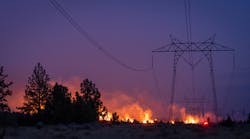The state of Texas funded the “Texas powerline caused wildfire mitigation project”, a four year project working with seven utilities in Texas to demonstrate and further develop technologies that would find failing powerline devices long before they became an ignition mechanism for a wildfire. Subsequent to that project they began studies with Pacific Gas and Electric, Southern California Edison, and several other utilities demonstrating Distribution Fault Anticipation (DFA) technology. DFA is a transformational technology that uses advanced waveform analytics in real time to detect the very early incipient stages of failing devices, allowing utility operators to find and fix many conditions before they become fire ignition mechanisms.
Speakers
Carl Benner serves as Research Professor in the Department of Electrical and Computer Engineering at Texas A&M University in College Station, Texas. He holds BS and MS degrees from Texas A&M and has been a researcher at Texas A&M for more than three decades. He is a registered professional engineer in the state of Texas, a Fellow of the IEEE (Institute of Electrical and Electronics Engineers), and a member of CIGRE (International Council on Large Electric Systems).
Dr. B. Don Russell is Distinguished Professor and Regents Professor in the Department of Electrical and Computer Engineering at Texas A&M University. He is director of the Power System Automation Laboratory and for over four decades has conducted research in the design, operation, and protection of electric distribution circuits. Dr. Russell Is past president of the Power and Energy Society of the Institute of Electrical and Electronic Engineers and is a member of the National Academy of Engineering. Dr. Russell is a fellow of five technical societies.
Jeffrey Wischkaemper is an Assistant Research Professor in the Department of Electrical and Computer Engineering at Texas A&M University. His work includes multiple projects focused on the characterization of vegetation contacts with power lines, low-voltage arcing, and other high-impedance faults.


